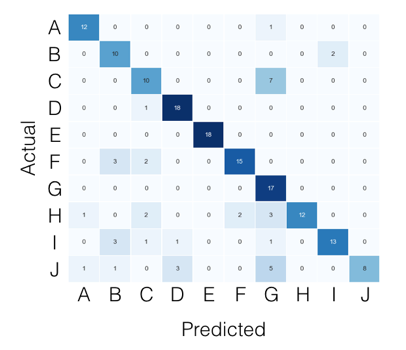My problem:
I have a dataset which is a large JSON file. I read it and store it in the trainList variable.
Next, I pre-process it - in order to be able to work with it.
Once I have done that I start the classification:
- I use the
kfoldcross validation method in order to obtain the mean accuracy and train a classifier. - I make the predictions and obtain the accuracy & confusion matrix of that fold.
- After this, I would like to obtain the
True Positive(TP),True Negative(TN),False Positive(FP)andFalse Negative(FN)values. I'll use these parameters to obtain the Sensitivity and Specificity.
Finally, I would use this to put in HTML in order to show a chart with the TPs of each label.
Code:
The variables I have for the moment:
trainList #It is a list with all the data of my dataset in JSON form
labelList #It is a list with all the labels of my data
Most part of the method:
#I transform the data from JSON form to a numerical one
X=vec.fit_transform(trainList)
#I scale the matrix (don't know why but without it, it makes an error)
X=preprocessing.scale(X.toarray())
#I generate a KFold in order to make cross validation
kf = KFold(len(X), n_folds=10, indices=True, shuffle=True, random_state=1)
#I start the cross validation
for train_indices, test_indices in kf:
X_train=[X[ii] for ii in train_indices]
X_test=[X[ii] for ii in test_indices]
y_train=[listaLabels[ii] for ii in train_indices]
y_test=[listaLabels[ii] for ii in test_indices]
#I train the classifier
trained=qda.fit(X_train,y_train)
#I make the predictions
predicted=qda.predict(X_test)
#I obtain the accuracy of this fold
ac=accuracy_score(predicted,y_test)
#I obtain the confusion matrix
cm=confusion_matrix(y_test, predicted)
#I should calculate the TP,TN, FP and FN
#I don't know how to continue



